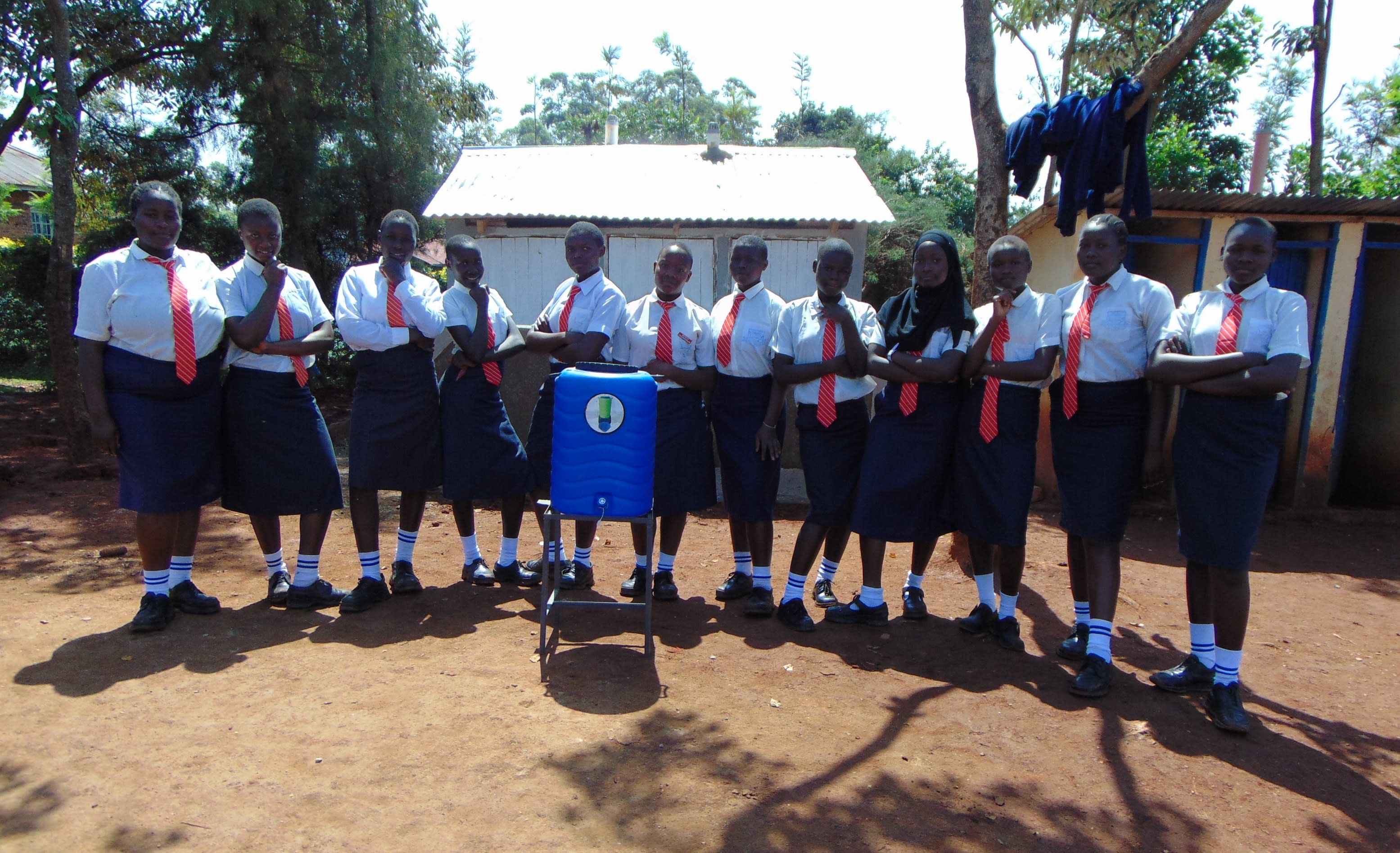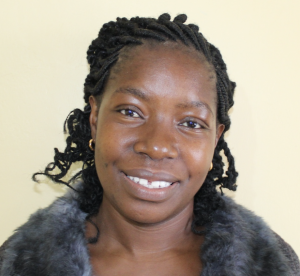September, 2019: Ikumba Secondary School Project Complete!
Ikumba Secondary School in Kenya now has access to a new source of safe, clean water thanks to the completion of their rain tank, which has the ability to collect 50,000 liters of water. We installed new latrines for students, handwashing stations, and we trained students and staff on improved sanitation and hygiene practices. All of these components work together to unlock the opportunity for these students to live better, healthier lives.

Students at the rain tank
Rain Tank
Construction for this 50,000-liter rain tank was successful!
Parents, staff, and students helped our artisans gather everything needed for construction. All the while, women cooked meals for the artisans, and the school provided accommodations for the artisans during their work. Local women and men helped our artisans with their manual labor, too.
The process officially began with our staff and school administration looking around the school compound to try and determine the best location for a new rain tank. This needed to be the best site with good, clean roofing to catch the rainwater.
Then, we cleared the site: excavating the soil within the required measurements to make level ground for the tank foundation. The foundation was cast by laying hardcore on level ground and then reinforcing it using steel, concrete and waterproof cement.

Pouring concrete over the rain tank's stone foundation
Both the drawing pipe as well as the washout pipe were affixed as the foundation was laid. The wall was built with ferro-cement techniques through 6 layers. The inner wall was plastered while rough casting was done on the outer part. Finally, the catchment area was dug, plastered, and a staircase installed.

Working inside the rain tank
Dome construction could begin after the superstructure had been given enough time to settle. The manhole cover was fitted, inlet pipes were connected to the roof gutters, inlet screens, ventilation pipes (breathers) and overflow pipes were all done to standard. There were no major challenges except for the occasional rain shower, which disrupted our work on some days. Otherwise, all went according to plan.

Dome construction
Once finished, the tank was given 3 to 4 weeks to undergo complete curing before it was cleaned and handed over to Ikumba Secondary School, though we will continue to offer them unmatchable support as a part of our monitoring and maintenance program.
The celebration was a great chance for us to acknowledge the school administration and students as the primary parties entrusted with the tools we’ve given, as well as remind them of our continued support as they develop.

Students at the rain tank
"This tank has uplifted the face of our school in this area," said Deputy Principal Mrs. Betty Sabwa.
"Water shortages have been one of the major problems faced by the school and now that it has been solved by the construction of the tank, I believe we will have more enrollment next term. Thank you...for coming to our rescue. God bless you abundantly."

Smiling at the rain tank's tap
"The availability of WaSH facilities in our school will reduce cases of time wastage that have been experienced before by walking for a long distance to go to the spring to fetch water," said Principal Mr. Geoffrey Anyira.
"I believe the school's academic performance will improve since students will now concentrate more on their classwork. Most girls used to be absent from school during their monthly period because the sanitation facilities were few and they lacked privacy but now this issue has been resolved."

Getting a drink from the rain tank
VIP Latrines
This project funded the installation of 6 new ventilated improved pit (VIP) latrines, half for girls and half for boys. All of these new latrines have cement floors that are designed to be easy to use and clean. And with a rain tank right on school property, there should be enough water to keep them clean.

Girls pose in front of their new latrines

Boys pose with their new latrines
Handwashing Stations
The 2 handwashing stations were delivered to the school and handed over to the student health club. These were placed outside of the girls’ and boys’ latrines to encourage handwashing after latrine use.

Girls at a handwashing station
Health club members teach other students how to properly wash their hands at the stations, make sure the stations are filled with water, and work to ensure that there is always soap or ash available.

Boys pose with a handwashing station
New Knowledge
Hygiene and sanitation training was scheduled with the help of the school principal, Mr. Geoffrey Anyira, who ensured that the training date would be convenient for students, staff, and parent representatives. Individual teachers helped by selecting students from each class to represent the others.
We had expected 20 participants but instead, 29 students turned up! We were happy to have more attendees than expected and welcomed them to our group. The training took place in the school's multipurpose hall which was a convenient place because it was spacious and well-lit. The weather was a bit chilly and it was drizzling outside but inside, our training was not affected in any way.

Training begins
We covered a number of topics, including personal hygiene such as bathing, oral hygiene, and handwashing with soap as a barrier from germs; and operation and maintenance of the new facilities, with each person understanding their role for long-lasting clean water and good health. The new student health club will be greatly involved in project management and will be responsible for encouraging good health and hygiene practices amongst their peers, teachers, and the larger community.

Handwashing demonstration
The trainees made notes as the training session went on and they asked questions at the end of each topic. They were actively involved in demonstrations when called upon and they also answered questions promptly.

Training group of students and staff
While discussing dental hygiene, we had a special moment one of the participants said that he has already been brushing his teeth religiously 3 times a day. When asked if he carries his toothbrush and toothpaste to school, he said he uses a chewed stick to brush after lunch. Other students confirmed that they see him brush. We urged them to emulate this practice to maintain good dental hygiene.

Student demonstrates brushing his teeth during dental hygiene session
During the session on facility function and maintenance, we covered every part of the project from diagrams of the rain tank and latrines to their cleaning and repairs. This was a special topic because the participants were very interested in it and when they were taken to the site, they asked questions to understand the functions of the tank parts. The elected student health leaders also promised that they would make sure that facilities are well maintained.

Tank maintenance training

Rain tank diagram
"I am glad I was identified to be part of this training because we have learned a lot about proper sanitation and improved hygiene and water treatment," said 16-year-old student Patrick Kitili. "Our school's hygienic condition will improve tremendously since we will put into practice what we have learned and the availability of WaSH facilities will make this possible."

Student Patrick Kitili
Thank you for making all of this possible!




 Rehabilitation Project
Rehabilitation Project








































